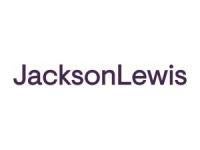As of February 3, 2025, most of Cal/OSHA’s COVID-19 Prevention Non-Emergency Standards have officially come to an end. This marks a significant shift for California employers who have been navigating these regulations and their predecessor emergency temporary standards for the past four years.
Despite the expiration of most obligations under this standard, employers are required to comply with certain recordkeeping requirements under Title 8, Subsection 3205(j) until February 3, 2026. As a practical matter, what does this require? There is some ambiguity in how the regulation is drafted.
To set the stage: While the Non-Emergency Standards were in effect, employers were required to keep detailed records of all COVID-19 cases, including the employee’s name, contact information, occupation, workplace location, last day at the workplace, and the date of the positive COVID-19 test or diagnosis.
Going forward, the requirement that employers comply with recordkeeping requirements through February 3, 2026, could be interpreted in either of two ways:
First, the simplest reading is:
- With respect to COVID-19 cases that occurred up to February 3, 2025, employers must maintain these detailed records for two years or until February 3, 2026, whichever date comes first.
Alternatively, a more conservative reading of the regulation leads to the following:
- Employers must continue to record and track COVID-19 cases that occur through February 3, 2026. Records of COVID-19 cases must be kept for two years. For example, records of a COVID-19 case in January 2026 would need to be maintained through January 2028.
The second interpretation raises additional questions. For instance, why would employers need to record and track COVID-19 cases when all of the related requirements from the Non-Emergency Regulations have expired (such as notifying employees, providing testing, etc.)?
Absent further guidance on this point, the answer is unclear. Cal/OSHA could be expecting employers to keep track of COVID-19 trends and respond to safety concerns through California’s Injury and Illness Prevention Program (IIPP) requirement.
To that point, even though the specific COVID-19 prevention regulations have ended, employers must still adhere to general workplace safety requirements:
- Employers are required to maintain a safe and healthful workplace as mandated by Labor Code section 6400.
- Employers must continue to implement and maintain an effective IIPP as required by Title 8, California Code of Regulations, sections 1509 (Construction) and 3203 (General Industry).
- If COVID-19 is identified as a workplace hazard, employers must evaluate and correct any unsafe conditions, work practices, or procedures associated with it.
While the end of Cal/OSHA’s COVID-19 Prevention Non-Emergency Standards signifies a return to pre-pandemic regulatory conditions, employers must remain vigilant in maintaining workplace safety and complying with ongoing recordkeeping requirements.





 />i
/>i

